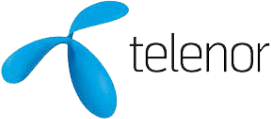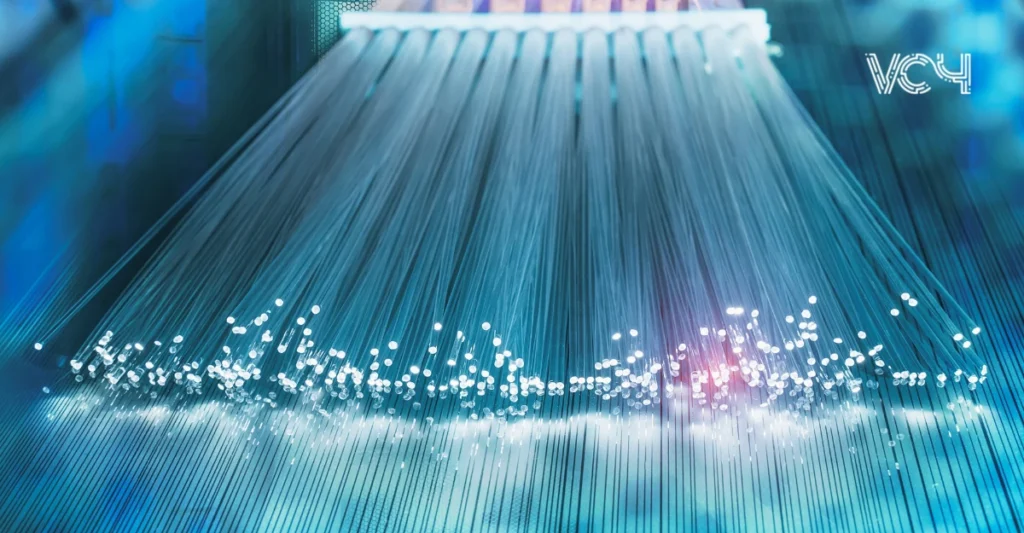Above, Beneath and Beyond: Exploring Fiber Optic Networks and Fiber Optic Cable Deployment
Trusted by:


















Fiber optic networks are a crucial part of modern telecommunications infrastructure. They enable high-speed data transmission over long distances with minimal loss. Here’s a comprehensive look at fiber optic networks, covering their technology, types, advantages, applications, and future trends.
What are Fiber Optic Networks and how do they work?
Fiber Optic Networks consist of optical transmitters, fiber optic cables to carry the signal, optical amplifiers and receivers. So what are fiber optic cables? Great question! Fiber optic cables consist of one or more strands of glass or plastic fiber, each thinner than a human hair. Data is transmitted as light pulses along these fibers, using lasers or LEDs. The core of each strand is surrounded by a cladding layer that reflects light inward, preventing loss and allowing the light to travel long distances.
So how does a Fiber Optic Network work? It works by light transmission. The key to fiber optic transmission is the use of total internal reflection. The difference in refractive indices between the core and cladding, causes the light to bounce back when it hits the boundary, traveling along the fiber without escaping.
Wavelength Division Multiplexing (WDM): This technology increases the data capacity of fiber by using multiple light wavelengths (colors) simultaneously on a single fiber. Each wavelength can carry a separate data channel, significantly increasing the overall data throughput.
What are the different types of Fiber Optic Cables?
Single-mode Fiber: This type uses a very small core size (approximately 8 to 10 micrometers in diameter) and transmits infrared laser light (wavelengths of 1310 or 1550 nanometers). It is designed for long-distance communication as it provides a single transmission path and minimal signal attenuation.
Multi-mode Fiber: This type uses a larger core size (about 50 to 62.5 micrometers) and transmits light from LEDs. Multi-mode fiber is used for shorter distances. as the larger core size allows light signals to bounce more significantly, leading to modal dispersion which can limit bandwidth over long distances.
Fiber optic cables are versatile and can be installed in various environments to facilitate widespread and reliable telecommunications.
Here’s how Fiber Optic Cables are typically deployed:
1. Underground Installation
Fiber optic cables are often laid underground, where they are less susceptible to environmental damage and human interference, compared to aerial deployment. They are usually buried in protective conduits and trenches:
- Depth: The standard depth can vary depending on the regulations of the particular country or region but typically ranges from about 24 to 48 inches (60 to 120 cm). This depth helps protect cables from damage due to construction work or other surface activities.
- Conduits: These are protective tubes or pipes that house the fiber optic cables. Conduits protect the fibers from moisture, soil, and other physical threats. They also make future upgrades easier, as new cables can be pulled through existing conduits without the need for additional digging.
2. Sub-Sea Deployment
Fiber optic cables are indeed also laid across the ocean floors to connect continents and provide international and transoceanic communication links. Here’s how they are deployed and maintained:
- Cable Laying: Special ships lay these cables along predetermined routes on the ocean floor. The process involves careful planning to avoid environmental damage and to route the cables away from natural hazards like underwater volcanoes and earthquake zones.
- Protection and Depth: Sub-sea cables are designed to be more robust than terrestrial cables because they need to withstand harsh oceanic conditions. They are typically buried in seabed sediments where possible to protect them from fishing trawlers, anchors, and marine life activities. The depth of the cables can vary widely, from shallow waters near coastlines to depths of thousands of meters.
- Repairs: Repairing sub-sea cables is a complex and expensive operation, typically requiring specialized ships and remotely operated vehicles (ROVs) to retrieve, mend, and re-lay the cables.
3. Environmental and Logistical Considerations
Deploying fiber optic cables, whether underground or sub-sea, requires meticulous planning to mitigate environmental impacts and ensure longevity. This includes:
- Environmental Impact Assessments (EIA): Before laying cables, particularly sub-sea ones, EIAs are conducted to understand and minimize ecological disruptions.
- Route Planning: For underground cables, planners must consider existing utilities and structures. For sub-sea cables, factors like shipping lanes, depth, seabed terrain, and protected areas are critical considerations.
- Material and Design Innovations: Advances in materials science have led to more durable and efficient cable designs that can endure challenging environments and reduce the need for repairs.
The global network of fiber optic cables, both underground and sub-sea, forms the backbone of international communications, enabling high-speed data transmission across vast distances with minimal loss.

Advantages of Fiber Optic Networks
Fiber optic networks stand out due to their exceptional performance characteristics. The immunity of fiber optics to electromagnetic interference ensures stable and secure communications, a critical feature in densely wired environments and high-interference industrial areas. Moreover, fiber optics are not only more reliable but also provide greater durability and scalability, accommodating the ever-growing demands of global data traffic. We’ve highlighted 4 key stand out advantages of fiber optics networks:
- High Bandwidth: Fiber optic cables provide greater bandwidth than metal cables. This allows them to carry more data and support higher performance in telecommunications and networking.
- Long Distance Signal Transmission: Fiber optics can transmit data over distances of up to 100 kilometers without the need for signal boosters, compared to about 100 meters for copper cables.
- Resistance to Electromagnetic Interference: Fiber optic cables are immune to electromagnetic interference, which can affect metal cables.
- Low Attenuation and Greater Reliability: Less signal loss means more reliable communication, and the materials used in fiber cables are more durable and resistant to weather conditions.
Real World Applications of Fiber Optics and Fiber Optic Networks
So where are Fiber Optics used? And where do we think we will see more of them in the future? The first and most obvious place, is of course Telecommunications. But there are also some other really interesting applications like medical and space. See below for the list we’ve compiled:
- Telecommunications: Fiber optics is the backbone of the internet and other telecommunications systems, providing the infrastructure for data, voice, and video transmission worldwide.
- Medical Imaging: Specialized fiber optic cables are used in a variety of medical imaging techniques and instruments.
- Networking: Within buildings and across campuses, fiber optic networking is preferred for backbones, connecting servers, and more.
- Military and Space Applications: Due to their high security (as they don’t radiate signals) and durability, fiber optics are ideal for sensitive applications.
- Integration with 5G: Fiber optics are integral to the rollout of 5G networks, providing the backbone for the high-speed, low-latency connections required.
- Smart Cities: As cities become smarter and more connected, fiber optics will play a crucial role in supporting all types of communication and sensor networks.
- Fiber to the Home (FTTH): The demand for high-speed internet at home will drive the expansion of fiber optic networks directly to residences.
Fiber optic technology continues to evolve, pushing the boundaries of what is possible in communications and networking. Its future looks bright as it remains at the forefront of high-speed data transmission technologies.
What software is suitable to monitor Fiber Optic Networks and it’s components?
IMS from VC4. IMS is an Inventory Management Solution software allowing you to Plan, Build and Operate your network, no matter if it’s a fiber one or not.
VC4-IMS streamlines the management of fiber optic networks by offering a robust suite of tools/modules for comprehensive asset tracking, detailed GIS integration, and automated operational workflows. This system supports efficient planning, deployment, and maintenance by providing a unified view of all physical and logical network assets. The GIS module enables precise geographical mapping of fiber routes, ducts, and trenches, which is crucial for effective network design and expansion. Additionally, automated workflows enhance service activation and fault management, ensuring timely and accurate updates. With these capabilities, VC4-IMS helps operators optimize resource utilization, reduce operational costs, and improve overall network performance and reliability. Catch up with the VC4 team and feel free to ask them any questions about IMS or about your current specific situation.



